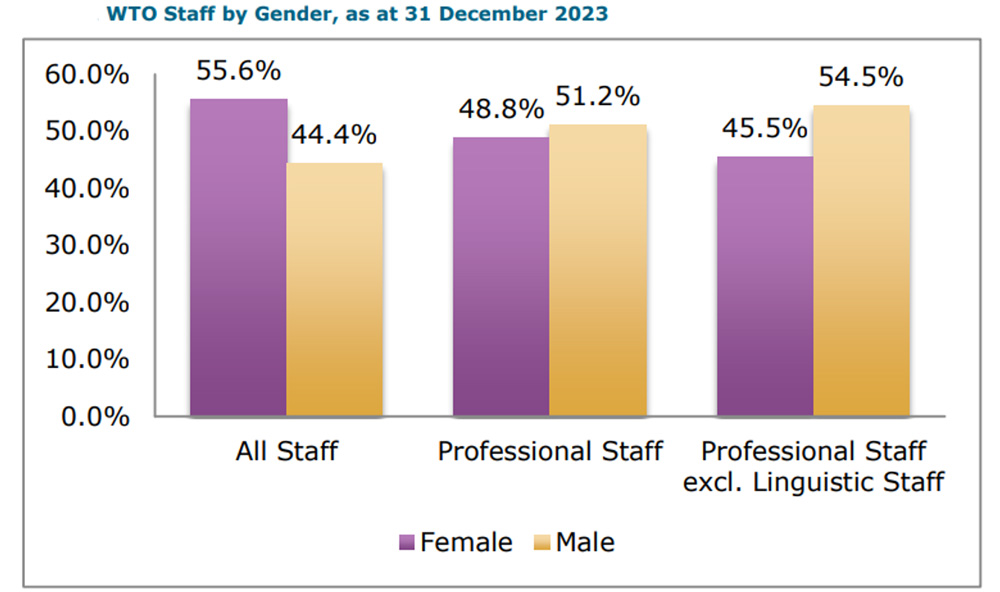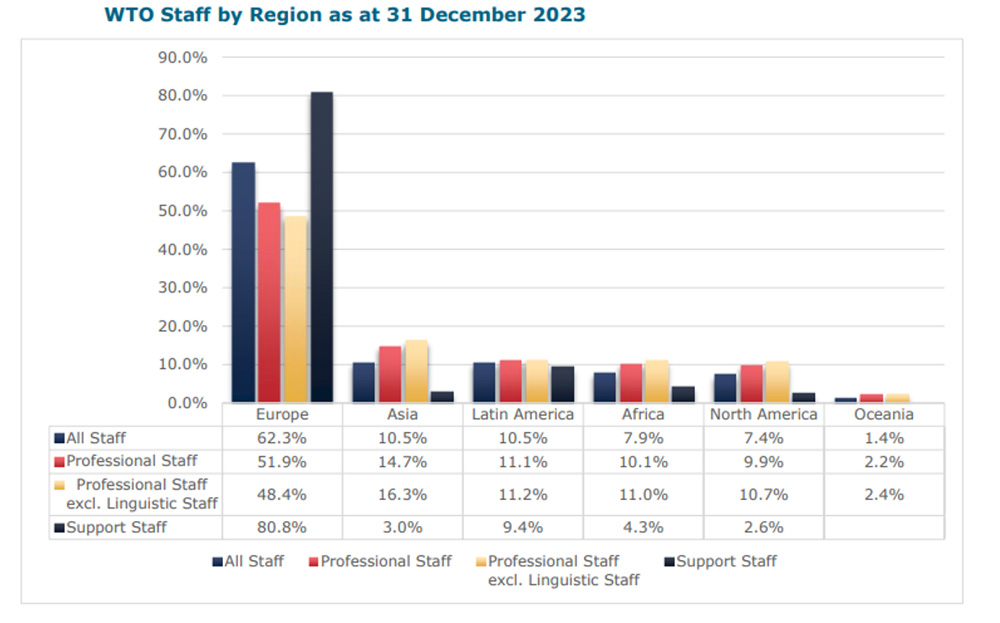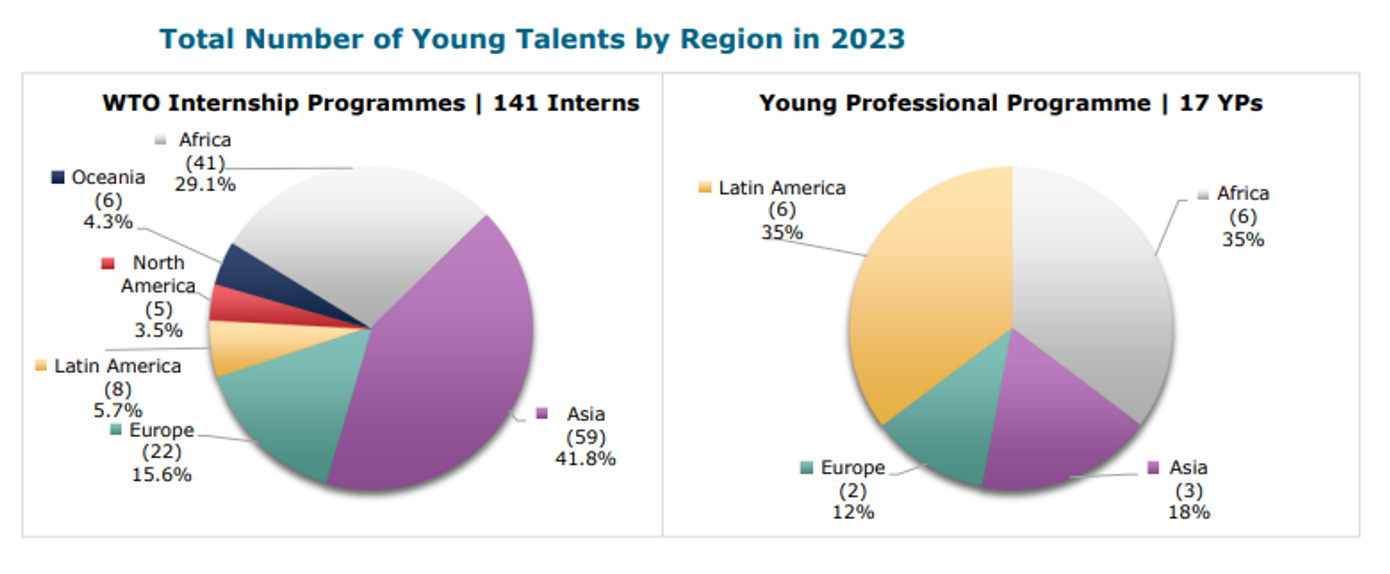overview
People and culture at the WTO
A diverse and multicultural workforce
Diversity is key to an international organization like the WTO, whose Secretariat should represent the diversity of its membership and the people it serves. A diverse workforce helps facilitate better collaboration and understanding between members with different legal systems and cultural negotiation styles. Diversity is also known to foster creativity and innovation, which are critical to address challenges facing global trade such as digital trade and environmental sustainability.
The WTO Secretariat comprises more than 600 staff members from about 90 countries, working in three official languages — English, French and Spanish — to support multilateral trade.
The WTO is committed to an inclusive environment where all individuals feel safe, valued, and treated with dignity, respect and fairness. No abuse of authority, discrimination, harassment, and sexual harassment, exploitation and abuse, retaliation in any form are tolerated.
Gender representation
Women account for 55.6% of WTO staff overall, outnumbering men by 360 to 288. Among professional staff, women represented 48.8% in 2023 (compared to 31% in 1995). Among the support staff, women represented 67.5% in 2023 (compared to 72.2% in 1995).

Geographic representation
Looking at staff representation by members' status as defined by the WTO (see chart below), 69.4% of WTO staff were from developed countries, 26.4% from developing economies and 4.2% from least developed countries (LDCs) in 2023. If we focus on professional staff, excluding support staff and linguistic staff, there is an improved balance, with 58.8% from developed, 35.8% from developing and 5.3% from LDCs.

According to the WTO regional grouping system as represented in the chart below, Europe remains the largest represented region in 2023 with 62.3% of staff overall, 51.9% of professional staff, 48.4% of professional staff excluding linguistic staff and 80.8% of support staff. Asia and Latin America follow with respectively:
- 10.5% of staff overall, 14.7% of professional staff, 16.3% of professional staff excluding linguistic staff and 3% of support staff for Asia; and
- 10.5% of staff overall, 11.1% of professional staff, 10.1% of professional staff excluding linguistic staff and 9.4% of support staff for Latin America.
Africa and North America then come close with respectively:
- 7.9% of staff overall, 10.1% of professional staff, 11% of professional staff excluding linguistic staff and 4.3% of support staff for Africa; and
- 7.4% of staff overall, 9.9% of professional staff, 10.7% of professional staff excluding linguistic staff, 2.6% of support staff for North America.
Finally, Oceania remains the least represented region with 1.4 % of staff overall, 2.2% of professional staff, 2.4% of professional staff excluding linguistic staff and no support staff.

Young talent programme
In addition to regular recruitment for staff positions, the WTO has eight programmes targeting young talents, many of which contribute to diversity:
- Young Professionals Programme;
- WTO Internship Programme;
- China's LDCs and Accessions Programme;
- WTO Support Programme for Doctoral Studies;
- Netherlands Talent Programme;
- French and Irish Mission Internship Programme;
- Regional Coordinator Internship Programme; and
- EIF Secondees Internship Programme.
The chart below provides a breakdown of the geographic distribution of young talents across WTO Internship Programmes and the Young Professionals Programme.
- These Internship Programmes encompass 141 interns, with the highest representation from Asia at 41.8%, followed by Africa with 29.1%.
- The Young Professionals Programme, which includes 17 interns, shows an equal prominence of Latin American and African participants, each constituting 35% of the total.

Share
Problems viewing this page? If so, please contact [email protected] giving details of the operating system and web browser you are using.